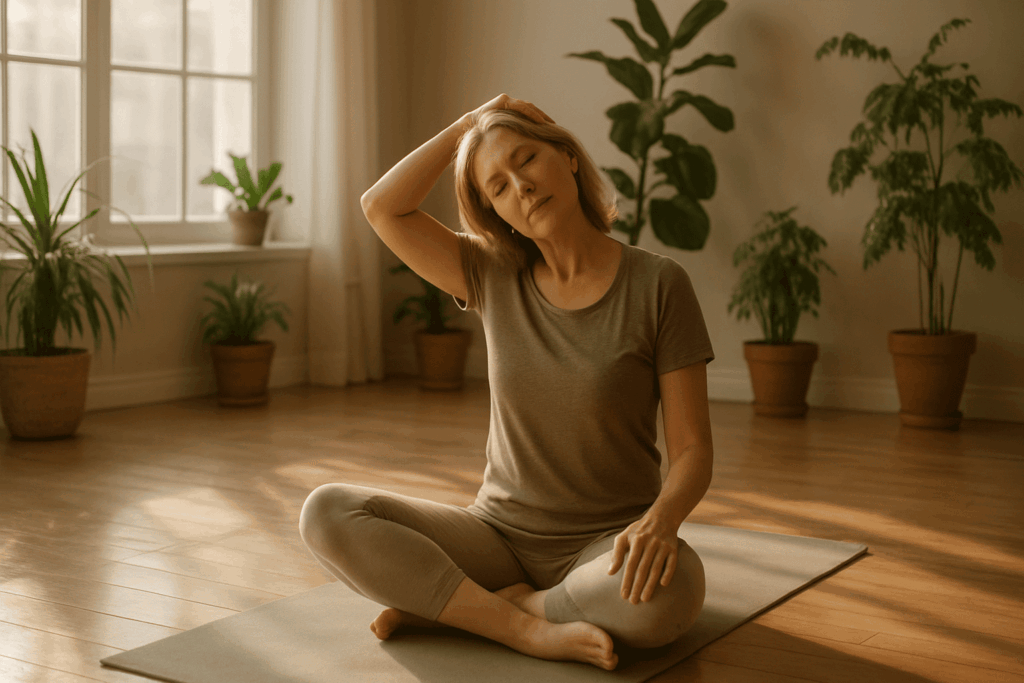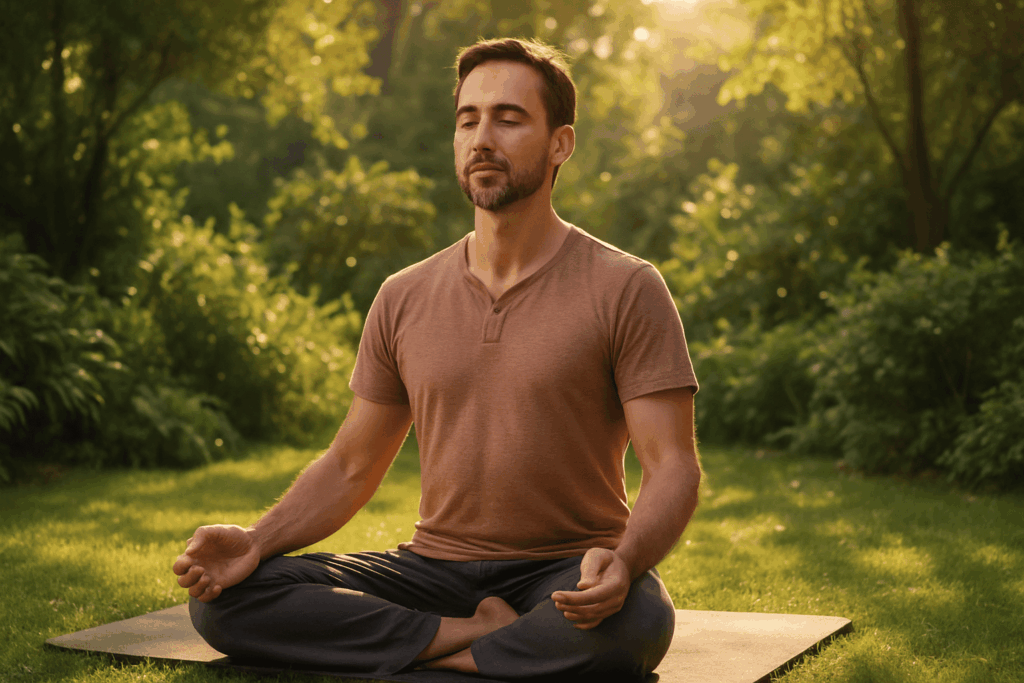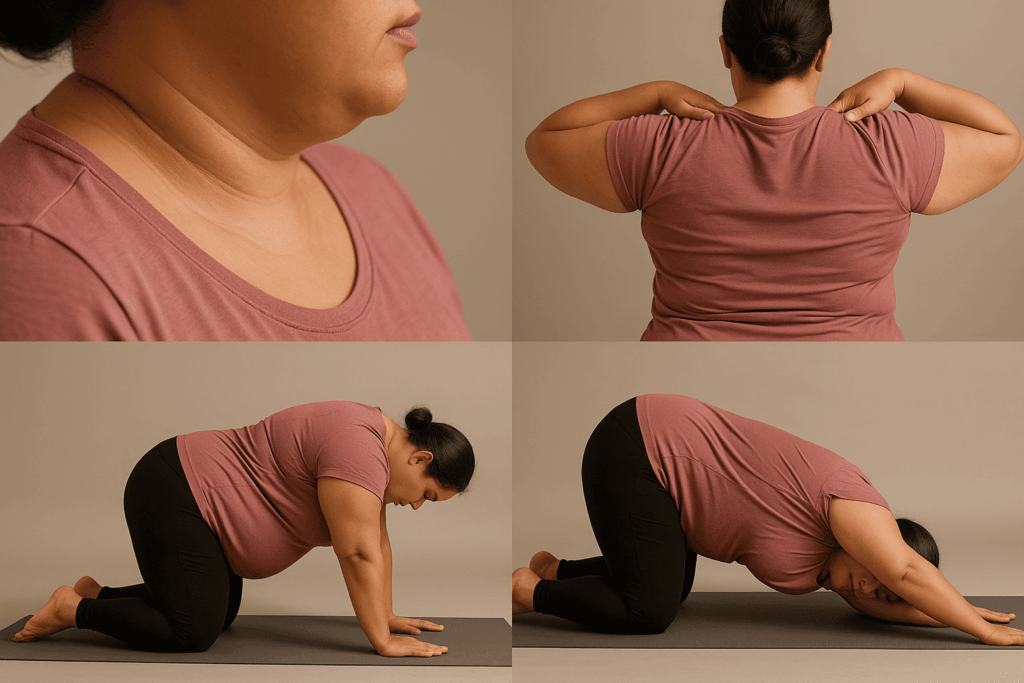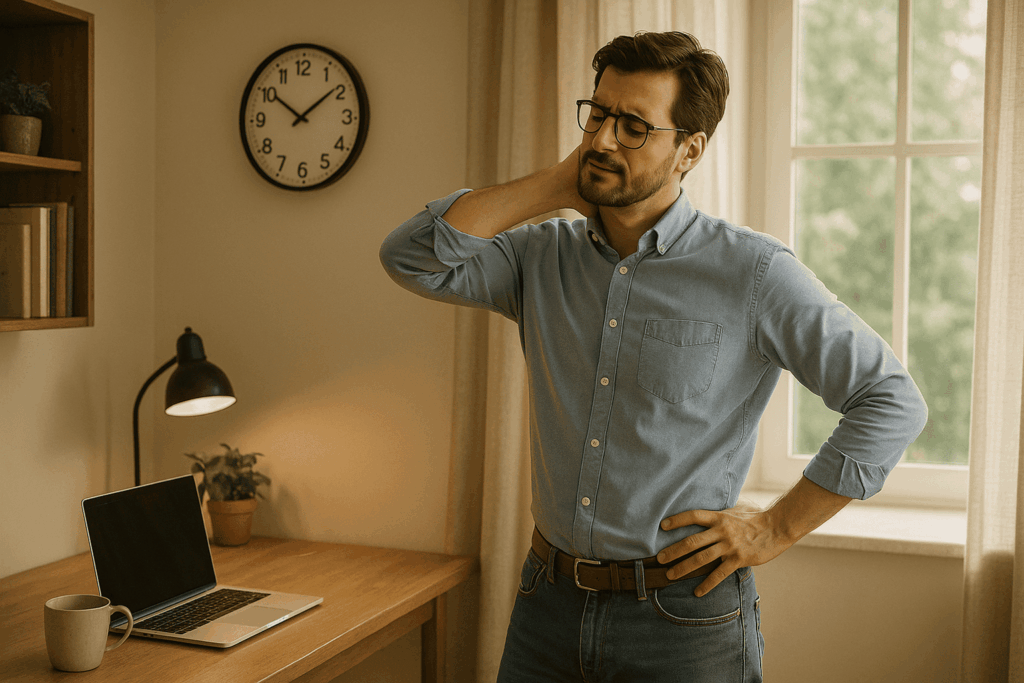Introduction to Yoga for Neck Pain
Yoga for neck pain is more than just a form of exercise; it offers a holistic approach that can significantly alleviate neck pain. Through gentle stretching and mindful movements, yoga helps release tension in the muscles surrounding the neck and shoulders, fostering a sense of relief and relaxation. Various studies indicate that incorporating specific yoga techniques can be particularly beneficial for those experiencing neck discomfort.
This report focuses on specific yoga techniques tailored for yoga for neck pain relief. With practices like gentle neck stretches and breath awareness, individuals can effectively alleviate pain while improving flexibility and posture. Research shows that regular practice can lead to significant improvement in neck health, reducing muscle tension and enhancing overall well-being. By being mindful of body movements and incorporating yoga into daily routines, many have found an effective solution to manage neck pain and its associated stress 1, 2.

Understanding the Causes of Neck Pain
Neck pain is a common issue that many individuals experience, often stemming from a combination of lifestyle factors and physical conditions.
Common Causes
- Poor posture from extended screen time.
Many people work long hours at computers or look down at devices, which can lead to improper neck alignment and strain. This posture creates excess pressure on neck muscles and can trigger pain. - Emotional stress contributing to muscle tightness.
High levels of stress may lead to muscle tension in the neck area. When a person is tense, they often unconsciously tighten their shoulder and neck muscles, resulting in discomfort or pain. - Physical inactivity leading to stiffness.
A sedentary lifestyle can cause the neck and surrounding muscles to become weak and inflexible. This stiffness makes individuals more susceptible to injury and discomfort, especially during physical activity or sudden movements.
Impact on Daily Life
Neck pain can significantly hinder daily activities and overall quality of life.
- Hinders productivity: Chronic discomfort may distract individuals from work and other responsibilities, reducing their efficiency and performance.
- Reduces quality of life: Ongoing neck pain can limit physical activities, affect sleep, and contribute to overall frustration and dissatisfaction with life. People suffering from neck pain may find it challenging to engage in hobbies, exercise, or even enjoy time with family and friends.
The Role of Yoga For Neck Pain Relief
Yoga has emerged as a powerful tool for managing pain, encompassing various aspects that contribute to physical and mental wellness.

Flexibility and Strength
One of the key benefits of practicing yoga is the enhancement of flexibility through targeted yoga poses. Many poses are designed specifically to stretch and lengthen muscles, making joints more flexible, which can alleviate stiffness and discomfort. Additionally, yoga helps in strengthening surrounding muscles, particularly in areas like the neck where tension often accumulates. This strengthening is crucial as it supports better posture and reduces the risk of injury, contributing to overall pain management.
Improved Circulation and Relaxation
The practice of yoga promotes improved circulation, as mindful movements and breathing techniques enhance blood flow throughout the body. This increased circulation can aid in the recovery from injuries and reduce pain. Furthermore, yoga fosters relaxation, which significantly reduces tension in both the body and mind. The combination of focused breathing and gentle movements creates a calming environment, helping practitioners let go of stress that often manifests as physical discomfort.
Benefits of Yoga for Neck Pain
Yoga offers a variety of physical and mental benefits, particularly for those suffering from neck pain. Here are some key advantages:
Releases Tension
Yoga helps in loosening tight muscles around the neck and shoulders. This relaxation is pivotal for alleviating stiffness and discomfort that often accompanies neck pain. By engaging in specific poses, individuals can effectively target and release accrued tension in these areas.

Improves Range of Motion
Gentle stretches enhance the flexibility and resilience of the neck muscles. Regular practice of yoga can gradually increase the range of motion, making it easier to perform everyday activities without restriction. Improved flexibility also contributes to the overall health of the cervical spine.
Promotes Relaxation
Through mindful breathing and relaxation techniques, yoga can reduce stress-related muscle tension. This is particularly important for individuals whose neck pain may be exacerbated by stress. Incorporating relaxation into yoga practice allows for a more profound connection between body and mind, leading to a calmer state.
Aids Posture Improvement
Strengthening exercises can support better alignment, which is important for preventing neck pain. Improved posture not only alleviates discomfort but also promotes a more balanced and aligned body. Practicing yoga regularly can instill habits that encourage good posture throughout daily activities.
By integrating these elements, yoga presents a holistic approach to managing and preventing neck pain.
Key Yoga Poses for Neck Pain Relief
Neck pain is a common issue that can result from poor posture, stress, or injuries. Incorporating specific yoga poses into your routine can provide relief and improve flexibility. Here are some effective poses to ease neck discomfort:
Neck Rolls
- Benefits: Helps warm up the neck and release tension.
- Instructions: Drop your right ear to your shoulder, then move your chin to your chest, and over to your left shoulder. Repeat this sequence 5–10 times to increase blood flow and alleviate tightness.
Shoulder Rolls
- Benefits: Loosens shoulder joints, relieving tension in the neck.
- Instructions: Lift your shoulders toward your ears, then roll them back and down. Perform 10 repetitions, then reverse the direction to ensure a full range of motion.
Cat-Cow Stretch
- Benefits: Opens the chest and shoulders while aligning the spine.
- Instructions: Begin in a hands-and-knees position. As you inhale, arch your back (Cow Pose), and as you exhale, round your spine (Cat Pose). Repeat for 1–2 minutes for a gentle spinal massage.
Thread the Needle
- Benefits: Deeply stretches the shoulders and upper back, which can provide relief for neck pain.
- Instructions: Start in a tabletop position. Slide your right arm under your left arm, lowering your shoulder and ear to the ground. Hold this pose for 30 seconds to 1 minute, then switch sides.
Eagle Arms
- Benefits: Stretches the shoulder blades and upper back, helping relieve tension.
- Instructions: Cross your right arm over your left, bend at the elbows, and attempt to touch your palms together. Hold this stretch for 30 seconds before switching sides.
Child’s Pose with Shoulder Stretch
- Benefits: Offers relaxation while stretching the shoulders, providing a compassionate stretch for the neck.
- Instructions: Sit on your heels with your forehead to the mat and arms extended in front. For a deeper stretch, bring your palms together above your head. Hold for 1–2 minutes.
Neck Stretch with Strap or Towel
- Benefits: Alleviates tightness at the base of the skull.
- Instructions: Use a towel or strap behind your head. Gently pull down while tucking your chin slightly. Hold this position for 20–30 seconds to experience relief.
“Yoga for neck pain”
Incorporating these yoga poses can significantly help in managing neck pain, leading to improved flexibility and relaxation. Regular practice is key to experiencing lasting benefits.

Creating a Routine
Incorporating neck stretches into your daily routine can significantly alleviate tension and promote mobility. It’s essential to integrate these stretches every 1-2 hours during sedentary activities. Regular breaks not only help release accumulated tension but also improve posture and reduce the risk of strain from long periods of inactivity.
Incorporating Neck Stretches
- Frequency: Aim to perform neck stretches every 1-2 hours during prolonged periods of sitting or desk work.
- Benefits: These stretches can alleviate muscle tension and enhance blood circulation, contributing to overall well-being.
Mindful Movements
Practicing gentle movements and encouraging mindfulness can maximize the benefits of your neck stretches. Focus on being aware of your body’s sensations during the exercises. This mindfulness can help you better recognize areas of tension and improve your range of motion over time.
Incorporating routines that respect your body’s needs equips you with the tools to foster a healthier lifestyle while working or engaging in other sedentary activities.
Summary of Recommended Yoga Practices
20 Min Gentle Yoga for Neck, Shoulder & Upper Back Tension
This practice integrates gentle yoga postures with nerve flossing techniques specifically aimed at alleviating tension in the upper body. The beauty of this routine lies in its accessibility; it is designed to accommodate all skill levels, promoting mindfulness and a slower pace of movement. The focus on breath and gentle alignment enhances the overall experience, making it easier for practitioners to release accumulated stress and tension in their neck, shoulders, and back.
Shoulder & Neck Release
This segment emphasizes the importance of releasing tension through simple, guided movements that significantly enhance neck flexibility. Each exercise is curated to promote better blood flow, incorporating a variety of stretches and gentle twists that are beneficial for relieving stiffness. Participants can expect to feel more comfortable and relaxed as the routine encourages a gradual release of tightness, ultimately contributing to better posture and mobility.

Frequently Asked Questions (FAQ)
How does yoga help with neck pain?
Yoga can significantly aid in alleviating neck pain by enhancing flexibility, relieving muscle tension, and improving posture. These benefits contribute to a decrease in discomfort experienced in the neck area, making yoga a valuable practice for those suffering from neck-related issues.
What is nerve flossing in yoga?
Nerve flossing is a specific technique used in yoga that involves gently moving and stretching the nerves. This practice aims to relieve tension in the neck and shoulders, helping to promote overall nerve health and reduce pain.
How often should I do yoga for neck pain relief?
For effective long-term relief from neck pain, it is generally recommended to practice yoga regularly, ideally 2-3 times a week. Consistent practice can lead to significant improvements in flexibility and strength, contributing to pain reduction.
Are there specific poses beneficial for tech neck?
Yes, there are specific yoga poses designed to alleviate “tech neck,” which typically involves discomfort resulting from prolonged computer or phone use. Poses that open the chest and stretch the shoulders are particularly effective in counteracting the slouched posture associated with tech neck.
Can anyone practice yoga for neck pain?
Yoga is highly adaptable and can be modified for all levels and abilities. This makes it accessible for most individuals experiencing neck pain, ensuring that nearly anyone can benefit from its restorative effects on neck health.
Related Topics for Internal Linking
Relevant articles to consider
- Yoga for Shoulder Pain: Exploring the benefits of yoga poses tailored specifically for alleviating shoulder discomfort can enhance your overall physical well-being. This article dives into various postures that promote flexibility and strength in the shoulder region, helping to prevent and relieve pain.
- Breathing Techniques for Relaxation during Yoga: Proper breathing plays a crucial role in maximizing the benefits of yoga practice. This article outlines effective breathing techniques that not only aid in relaxation but also enhance focus during yoga sessions, creating a more fulfilling experience.
Both topics provide valuable insights that can complement your yoga practice, enriching your journey toward physical and mental wellness.
you can also check 200 hour yoga teacher training in bali
